
Andrew C. passes along this interesting item from Coolhunting. The paint company Delux, as I understand it, is setting out to colorfully paint “dreary” buildings around the world. The Delux site for the project, which is called Let’s Colour, says it will “work with communities all over the world.”
While there is clearly a murketing element to this, I’m cautiously impressed by the idea. The project’s — very colorful! — blog is here.

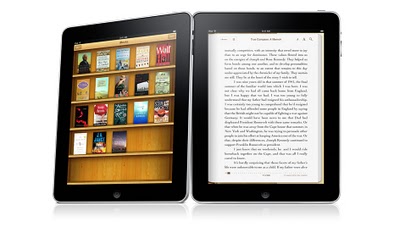
Via Bookshelf Blog, click for more.
Here via the Bookshelf blog are two items of note. Above, the iBookshelf app, available for iPhone or iPad, as I understand it. Below, an iPhone bookshelf skin.
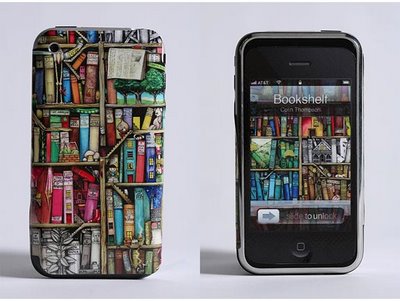
Via Bookshelf Blog. Click for more.
I assume — if you’re at all interested in this series of posts — you’ve already heard about, read, critiqued, etc the Ken Auletta iPad piece in The New Yorker. Can I possibly add anything? Not really, but in relation to this series, I did ponder this aside:
There are now an estimated three million Kindles in use, and Amazon lists more than four hundred and fifty thousand e-books. If the same book is available in paper and paperless form, Amazon says, forty per cent of its customers order the electronic version. Russ Grandinetti, the Amazon vice-president, says the Kindle has boosted book sales over all. “On average,” he says, Kindle users “buy 3.1 times as many books as they did twelve months ago.”
Obviously buying books isn’t the same thing as reading books. It’s quite plausible to me that e-books, being rather easy to buy, will set a new standard for the distribution of paid-for and unread words. Does it matter? My mixed feelings are too obvious to bother expressing.
But as it happens, I was sorting out the physical books in my office the other day, and trying to estimate the percentage of books I own but haven’t read. There are many reasons for this. Let’s just set aside the stuff that I have no intention of reading but was sent to me be a publicist, or don’t want to read but might have to at some point for professional reasons. There are plenty of the books I own that I really do intend to read — but I “haven’t found time.” How many? What percentage? And would such titles pile up more quickly on ebook “shelves”? I think for me they would.

Mr. Portigal (thanks!) points out this Metafilter post that I’d missed:
In the capital of Turkmenistan stands an enormous statue of a book. Every evening at 8PM, the statue swings open and a recently deceased dictator’s magnum opus, the Ruhnama, is broadcast throughout the square while a video from within the statue shows his image.
The post links to a documentary maybe by Finnish filmmakers and available on YouTube in 10 parts. I did not watch the whole thing. In this part, however, at about the 4:35 mark, there’s some twilight / nighttime footage of the book swinging open. I know precisely zero about the rather dodgy-sounding politics here, but an immense book that swings open, onto which video images are projected, is fascinating.
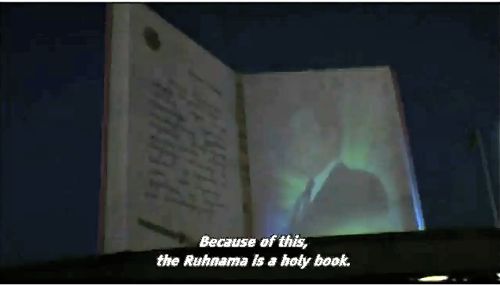
Click to see YouTube video; I’ve punched up this image a little.
This post is part of a series.
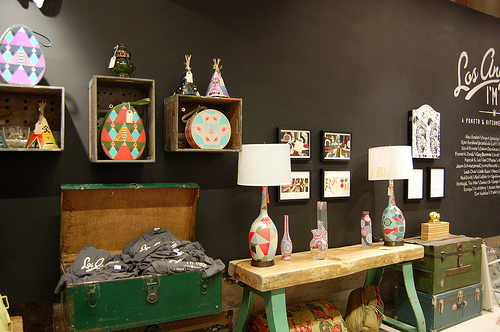
I have to mention this, and only partly because there is a real live Significant Object in the show:
Poketo & Kitsune Noir present: “Los Angeles, I’m Yours”
April 24th until May 15th
Space 15Twenty Gallery, 1520 N. Cahuenga Ave., Los Angeles, CA 90028
From April 24th to May 15th, “Los Angeles I’m Yours” transforms Space 15Twenty Gallery into a living art market. Filled with an eclectic mix of found objects, these vintage pieces are given new life as over 30 artists reinterpret and reincarnate these objects into art.
“Los Angeles, I’m Yours” will create the same joy of the hunt and sensory overload experienced every month at Los Angeles’ famed Rose Bowl outdoor market. Found objects are given new life as an impressive roster of artists will reinterpret and exhibit pieces ranging from vintage glass ware, old vinyl records, antique lamps, and odd knick knacks. Imagine these vintage finds, drawn on, painted on, and manipulated by the artists into a new form.
Posted Under:
Things/Thinking,
To Do by Rob Walker on April 26, 2010
Comments Off on Pictures of stuff, cont’d: Flea Market-inspired Art Show

Douglas Coupland:
Last month I installed new bookshelves in a room in my house. They’re black, and my painter offered the unsolicited opinion that they might look depressing when completed. I knew he was wrong because, at the very least, the paperback shelf couldn’t help but have a cheerful orange zing a zing that comes from the Penguin spine, the most wonderfully insidious default interior design statement in our culture.
Of course he’s not simply expressing this opinion in public; it’s part of “A Penguin 75th Anniversary Project By Douglas Coupland.” (Is it just me or has “project” become the trendy word of the moment? Everybody is working a “project” now. Or several “projects.”) This is essentially an appreciation of Penguin cover design, which deserves appreciation: It is, in fact, iconic.
The project, as I understand it, is to use this graphic form (the Penguin cover) as template through which to “speak to the past.” He asks: “How would you speak to someone in the year 1935 from 2010 using a Penguin cover?” Coupland’s answers are here; templates can be downloaded here and people who have done so have added their creations to this Flickr set.
To be honest, I wasn’t really that impressed with any of the results so far. But one of Coupland’s examples (above) caught my eye, and one of the “crowd” submissions (below) caught my eye, and seemed relevant to this series. And, again, I really do think Penguin’s design style is iconic.
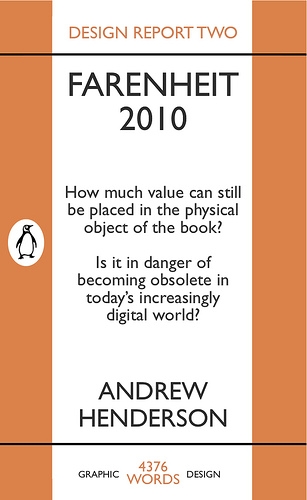
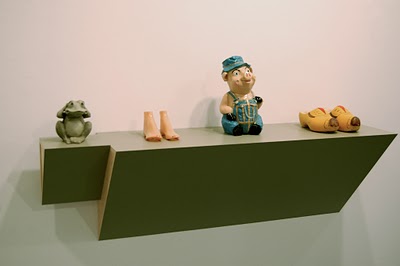
By Haim Steinbach. Click for more.
Once more from the indefatigable Junk Culture:
Haim Steinbach has been an influential exponent of art based on already existing objects. Since the late 1970’s Steinbach’s art has been focused on the selection and arrangement of objects, above all everyday objects.
This post is part of an occasional series.
Posted Under:
Things/Thinking by Rob Walker on April 25, 2010
Comments Off on Pictures of Stuff, cont’d: Selection and arrangement
[April 28 2010 update: Some better pictures here. Also, PSFK has picked up on this. But if you read Murketing, you got it here first.]

Here’s something pretty cool: Crystal Chou, a graduate student at the Academy of Art University, San Francisco, will tomorrow present her thesis project, Superluxe. This pop-up window installation will be up from April 26 – May 14 at 74 New Montgomery St., San Francisco.
The Superluxe blog explains:
This design project will take form as a window installation of a one stop shop selling do-it-yourself instant lux branding tools. The shop is intended to poke fun at the elitist luxury industry and demonstrate that anyone can create their own luxury empire based on the current industry’s formulaic branding strategies. Through this satiric commentary, the project encourages that the luxury industry move towards a new humble business model of experimentation and creativity.
Needless to say: This is my kinda thing and I wish I could see it in person. Maybe you can? Here are a couple of Superluxe’s “products”:
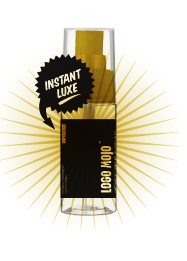 “Logo Mojo and it comes in a form of a spray. It’s a fictitious product that turns a logo into a crazy, fancy, shmancy pattern.”
“Logo Mojo and it comes in a form of a spray. It’s a fictitious product that turns a logo into a crazy, fancy, shmancy pattern.”

“Bling it up is a typical toy vending machine but dispenses capsules filled with diamonds (plastic diamond confetti).”
Other items on the Merchandise List for Superluxe include: Brand In A Bag; Celebrity Endorsement Certificates; Can of Buzz; etc.
If you get to peek at this, please let me know.
Save
 HIT REWIND
HIT REWIND
There is little to be nostalgic for about the cassette tape — except nostalgia itself.
Over the last couple of years, sales of vinyl records increased; the numbers aren’t huge, but they sparked a lot of public musing about the format’s qualities. Cassette sales, meanwhile, steadily dwindled to a mere 34,000 last year through the retail venues tracked by SoundScan. Considering this not long ago, I concluded that the romance associated with vinyl doesn’t apply to its longtime analog rival. I was wrong about that. In looking (and asking) around online, I realize now that there is extensive evidence of ongoing appreciation for the cassette — or at least the idea of the cassette.
Read the column in the April 25, 2010, New York Times Magazine, or here.
And YES, this column is the result of my earlier post on this site, The Idea of The Cassette: THANKS to all who responded to that and alerted me to excellent examples. I am sorry I couldn’t include everything in the column. (Also, for the record: I have zero control over what gets hotlinked on The Times site.)
Discuss, make fun of, or praise this column to the skies at the Consumed Facebook page.
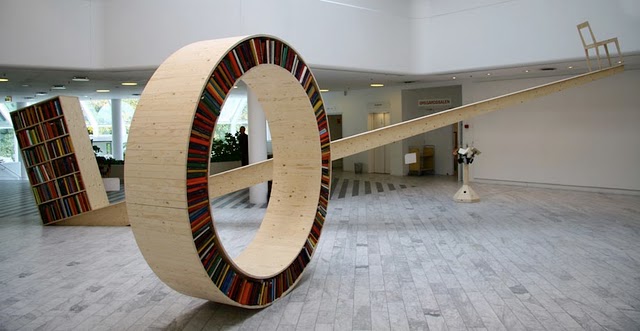
David Garcia Studio; Click for more.
Core77 picks up the circular bookshelf mentioned here in an earlier installment in this Murketing.com series, and notes the creator (whose name I didn’t have): David Garcia.
More to the point, Core77’s item cites this Dvice post, which in turn cites a blog called Bookshelf: The home of interesting bookshelves, bookcases and things that look like them — which is an absolute stunning trove of bookshelf/case-related images. I’ve just spent half an hour click through the archives and barely made a dent. In addition to several of the things from this series there’s a ton of stuff that should be in this series (and perhaps will be). It’s really an amazing blog.
In addition, one Bookshelf blog item is about a site called Lookshelves, whose proprietor asks people to send in pictures of their shelved books and answer a few questions. Meghan Beresford explains:
When I go to someone’s house, I am immediately drawn to their bookshelves. I want to know what they read (or buy), how they display their books, what’s well-thumbed and what’s in the darkish corners. I want to stumble into their secret interest in banjo, or ouija boards, or the Ottoman Empire. I love seeing that we’ve read the same thing, or being reminded that I meant to read that book, or seeing a bunch of books by an author I’ve never heard of right next to a writer I know and love. For all of these reasons, I love bookshelves.
More on this later, too.
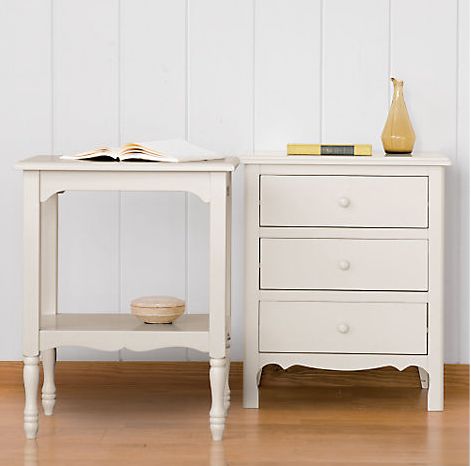
“What is it with all these books?” Nicholson Baker asked in the 1995 New Yorker piece about books used as props in catalogs (as mentioned yesterday). And given that date it’s a little surprising that he continues: “Isn’t the Book supposed to be in decline – its authority eroding, its informational tax based fleeing to suburbs of impeccably edged and weeded silicon?”
Fifteen years later, that’s still the conventional wisdom. (Which doesn’t mean it’s wrong – just that like so much of today’s digital euphoria, it’s really familiar. Sometimes it amazes me how little has changed in the past decade and a half. But that’s another story.) Baker’s story wasn’t about the future of publishing, it was about what books, as objects, signify — after all, those catalog pages weren’t full of random cassettes, or old magazines, or stray cell phones. I mentioned some of his answers in yesterday’s post.
What I got curious about is whether, fifteen years later, books still serve this sort of function – not in mail-order catalogs, per se, but in their online descendants. I spent a bit of time poking around the site of The Company Store. Poking around a web site is a far different experience than paging through a catalog — much more lean-forward, as they say, clicking and making decisions instead of idly following the flow while letting the mind wander. But I found a few things before I got tired of the exercise.
At the top of this post is the Romantic Table Collection (it now seems to have disappeared from the site) — included a couple of volumes in a manner that I suspect would have fit right in with the catalog imagery Baker pondered a decade and a half ago. Below: Vivid Ottoman. I enjoy this use of books as props, because the little stack on the left is being deployed, somewhat absurdly, as a superfluous and probably unwieldy stand for a vase. This seems to degrade the of the book, if you ask me: The possibility of these books being opened is basically eliminated; books become just things lying around to be put to some kind of “use,” however pointless.
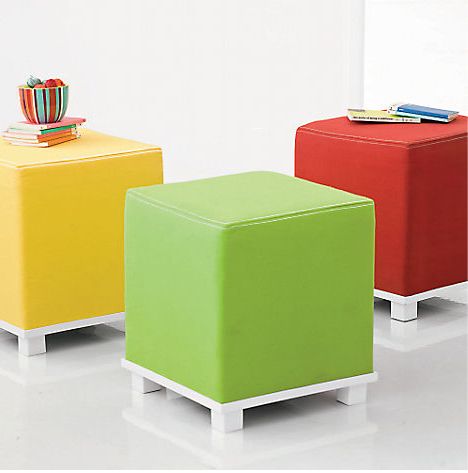
In this entry for Colorblock Bedding (also now gone), I noticed the books under the nightstand, but …
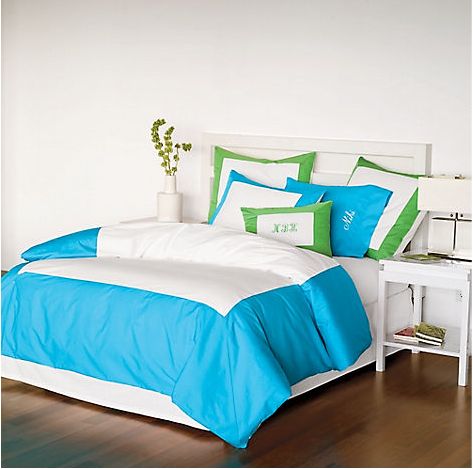
… what’s odd is that if you look closer you’ll notice that these appear to be two identical copies of each of two books. What would explain this? Baker noted certain books popping up in multiple photographs in a single catalog — but multiple copies of the same title in the same image? This seems like sloppiness on the part of the props person, no? And again: a bit of an insult to the idea of the book.
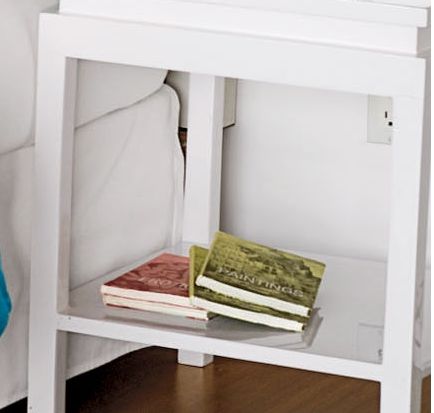
One more post related to the Baker piece next week – sorry to go on about it, but there’s so much in that seems important to the this occasional series on idea of the book.
Posted Under:
The Designed Life by Rob Walker on April 23, 2010
Comments Off on The idea of the book: Catalog props revisited
- Brief meditative exercise helps cognition: “Some of us need regular amounts of coffee or other chemical enhancers to make us cognitively sharper. A newly published study suggests perhaps a brief bit of meditation would prepare us just as well.”
- Motivated Multitasking: How the Brain Keeps Tabs on Two Tasks at Once: So this study suggests that under some circumstances, “rather than being totally devoted to one goal at a time, the human brain can distribute two goals to different hemispheres to keep them both in mind.” But then the story quotes an expert contending that “the new work does not, however, show that the brain can actually execute two distinct tasks at precisely the same time.” Huh? Well is this evidence of something new or just the same continuous partial attention framework that’s already been established? I don’t get it.
- The “recycled suit” totebag: From Poketo.
- Dept. of startling cynicism: Art Fag City in retracting its (apparently false) accusation that Wooster Collective “had to be” getting money to hype the Banksy movie: “It never occurred to me that anyone would so aggressively promote a movie over twitter and [a blog] without payment.” Wow, is that what it’s come to?
These links compiled via delicious, and repurposed here with plug-in Postalicious. Not enough stuff? Not the stuff you wanted? Try visiting unconsumption.tumblr.com, murketing.tumblr.com, and/or the Consumed Facebook page.
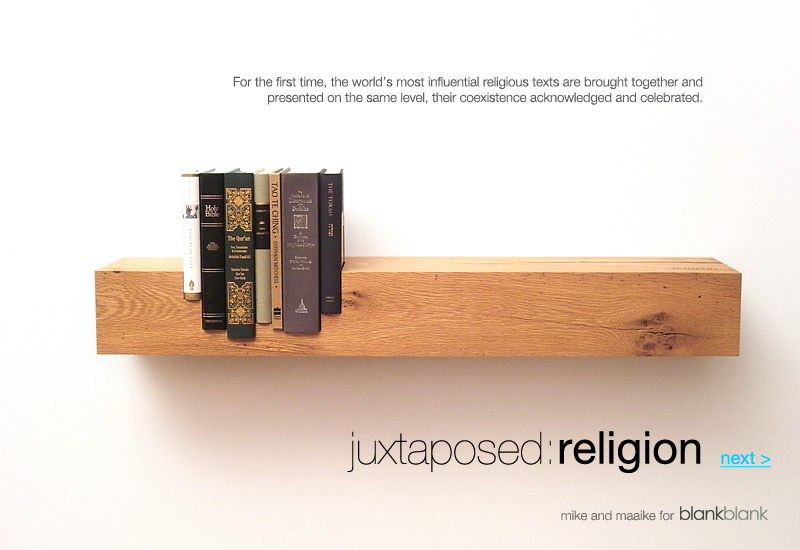
Click for more.
This shelf and set of religious texts are (or I guess were) sold together — the idea is the world’s religions are “presented on the same level,” according to BlankBlank. I suppose you could read the books, too; or you could simply co-sign on the general concept and treat this as a statement of your enlightenment, and leave it at that. Note that the shelf, while taking a rough-and-ready “reclaimed hardwood” form, is elegantly branded:
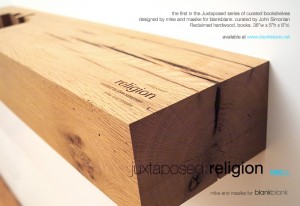
This was the first in a “series of curated bookshelves.” The second in that series: “Seven of the world’s most seminal texts on power and its relationship to the ordering of society are brought together and presented on the same level.”
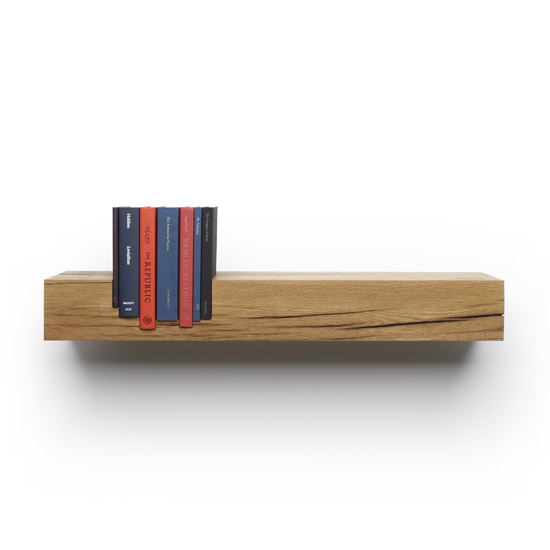
Power. Click for more.
The books: Leviathan by Thomas Hobbes, The Federalist Papers by James Madison, Alexander Hamilton, and John Jay, The Republic by Plato, On Liberty by John Stuart Mill, The Communist Manifesto by Karl Marx, The Conquest of Bread by Peter Kropotkin, and Social Justice in Islam by Sayyid Qutb.
The price is $3,000.
I’m thinking a wall-decal version might a good alternative to offer entry-level consumers. (And perhaps a small, sticker version to put on a mobile reader device?)
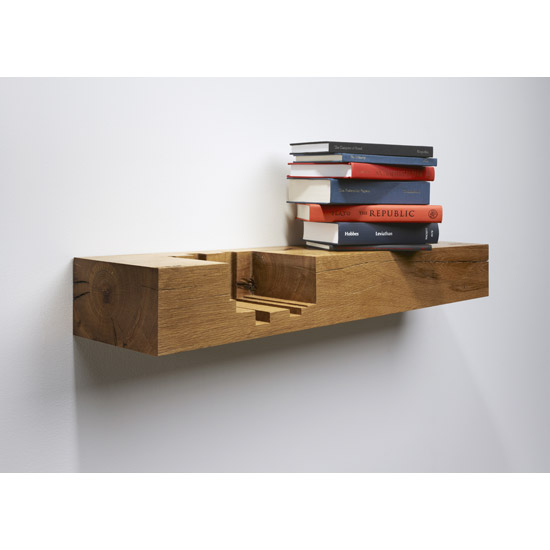 Part of a series. Thx for the tip: Harold.
Part of a series. Thx for the tip: Harold.
Posted Under:
The Designed Life by Rob Walker on April 23, 2010
Comments Off on Books, the idea, cont’d: the “curated bookshelf”
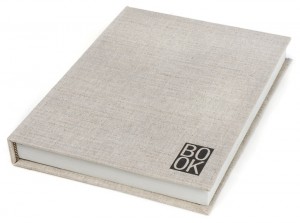 This was commented earlier, but here is BOOK.
This was commented earlier, but here is BOOK.
Designed by two Minnesotan bibliophiles, BOOK began as a project to produce artist’s monographs. After designing and constructing our first book, we realized that the book jacket is a time-tested method of protection applicable to other materials beyond pages. While we believe that that BOOK is a great companion for digital devices, we also believe in the power of paper books. A portion of the profits from BOOK will be used toward producing artists’ books at Location Books.
The upshot is something that makes your e-reader look like a real book — albeit not a specific book, but just, well, the idea of a book.
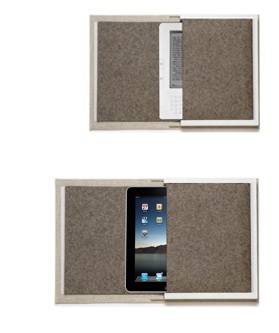 In a sense the Kindle version is a higher-end take on Busted Typewriter’s revision of books into device-holders. (You will recall the Buying In iteration.) What I’m more curious about is the iPad version. The iPad strikes me as a display device — people who buy these want to wave them around and accrue status via their prize possession, don’t they? But maybe that’s not fair. Perhaps there is a segment of the iPad early adopter public that is sheepish-to-modest about the gadget, and prefers to keep it on the low? If so, here is the $89 solution.
In a sense the Kindle version is a higher-end take on Busted Typewriter’s revision of books into device-holders. (You will recall the Buying In iteration.) What I’m more curious about is the iPad version. The iPad strikes me as a display device — people who buy these want to wave them around and accrue status via their prize possession, don’t they? But maybe that’s not fair. Perhaps there is a segment of the iPad early adopter public that is sheepish-to-modest about the gadget, and prefers to keep it on the low? If so, here is the $89 solution.
Posted Under:
Uncategorized by Rob Walker on April 22, 2010
Comments Off on Books, the idea, cont’d: Disguising your Kindle .. or iPad?
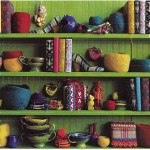 A couple of weeks ago now I mentioned Nicholson Baker’s piece, “Books as Furniture,” from the June 12, 1995 New Yorker. (Thx again Jim Rosenau.) Like much of Baker’s best work, it’s based on simply noticing something that seems curious — and going to fantastic lengths to explain what that something is all about.
A couple of weeks ago now I mentioned Nicholson Baker’s piece, “Books as Furniture,” from the June 12, 1995 New Yorker. (Thx again Jim Rosenau.) Like much of Baker’s best work, it’s based on simply noticing something that seems curious — and going to fantastic lengths to explain what that something is all about.
In this instance, what he noticed was how frequently mail-order catalogs for furniture and clothing other lifestyle-product companies featured, as casual props in their carefully staged photographs, books. Along the way he makes several observations that, in addition to being quite relevant to this site’s occasional series on the idea of the book, are also just flat-out wonderful.
Poring over catalogs from The Company Store, Crate & Barrell, Crabtree & Evelyn, Tweeds, J. Crew, etc., Baker spotted book after book. Though their titles were often illegible, and many seemed chosen more for the color of the spine than whatever was on their pages, it was nonetheless the case that these images were
surrounding printed fiction with life-size fictional rooms that resemble our own real rooms except that they are a good deal neater, costlier, and more literate….
There isn’t a self-help book or current best-seller to be seen, because the men and women who live in the rooms of the mail-order catalogues never read best sellers. In fact, they never read paperbacks.
This leads into a highly useful history of book display, going back to the first century, “when some books were still published – that is, multiply copied – on rolls (volumina), and stored on their sides” in armoire-like cabinets that were the precursors to the bookcase, “with little tags hanging from their ends which bore their titles.” A Pottery Barn catalog perused by Baker alludes to this history in the blurb for an armoire. “But can its copywriter truly believe that anyone is now going to keep a book collection behind the closed pine doors of a nine-hundred-and-ninety-nine-dollar cupboard?” He answers: No.
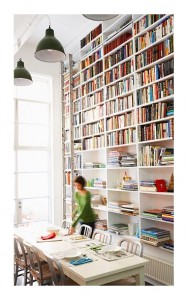
Catalog designers know perfectly well that books, if we are fortunate enough to own any, should be out there somewhere, visible, shelved in motley ranks or heaped on tables as nodes of compacted linearity that arrest the casual eye and suggest wealths of patriarchal, or matriarchal, learnedess.
Unlike other collectibles, books “represent a different order of plenitude,” Baker writes, one that encompasses “the camel caravans of thought-bearing time to read them through.” And he quotes William Gladstone arguing against a fashion for ornamental bookcases; those objects should remain plain, Gladstone says, because books “are themselves the ornament.”
Is the fate of this ornament at long last threatened? That’s been an undercurrent of this series, I suppose. Or maybe it’s more accurate to say that I think this series has been suggesting that the ornament will survive, but will also evolve. Whether books have a future or not, I think the idea of the book does.
More on this tomorrow.
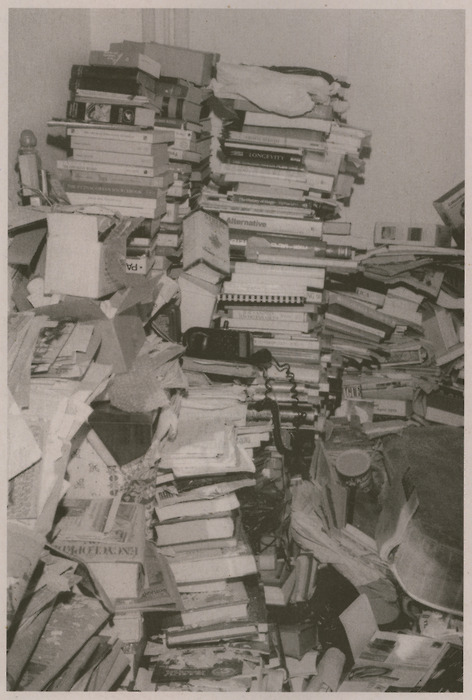
Public Collectors says: “Scanned from The Plan by Michael Schmelling, 2009, J&L Books, Atlanta. ‘Between 2003 and 2005 Michael Schmelling photographed various homes and apartments in the company of Disaster Masters, a New York-based agency that specializes in cleaning homes and counseling hoarders.’” Via Dinosaurs and Robots.
This would be a non-joyous version of clutter. (Joy and clutter also discussed here, as part of this series; and here on the Aesthetics of Joy blog.)
Posted Under:
Things/Thinking by Rob Walker on April 22, 2010
Comments Off on Pictures of stuff, cont’d: The not-appealing hoard




 "
"













 HIT REWIND
HIT REWIND

























 Kim Fellner's book
Kim Fellner's book  A
A